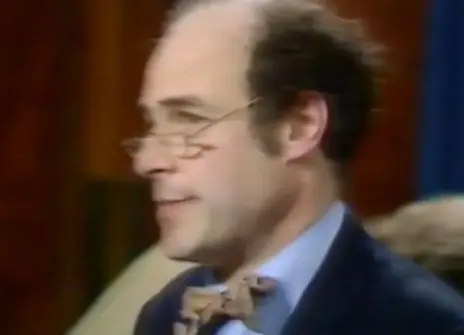Lecture 6 – Signals from the minds
From the 1975 programme notes:
It is part of everyday social experience that we receive and send out signals indicative of our emotional or mental state. 'He looked happy' ... 'she sounded rather anxious' ... 'he parted with a confident handshake' ... 'there was the smell of fear about' are all phrases which we use without really thinking about the nature of the signals involved. Most of the code, irrespective of the sense through which the message is received, almost certainly has to be learned. If we are faced with an individual whose social training has been entirely in another culture, such as a Japanese person who has never been to Europe before, only very elementary signals get through in either direction. Perfume, make-up, and even hairstyles may be used as signal flags that reinforce the impression we would like to create, probably by imitating and exaggerating the natural code. So far there is very little about this which we can measure, though there are people like caricaturists and actors who have obviously identified some of the important parts of the code and can produce the signals at will.
On the other hand, emotion also affects many of the physiological factors mentioned in the previous lectures. This is a disadvantage to the doctor who may be misled by a temporary, emotion-induced, abnormality, but also provides the basis for the work on 'lie detectors'. Some are obvious to the naked eye: Blush or a sudden pallor is no more than a change in the blood supply to the skin.
During this course of lectures, you will get an impression of the personality and mood of the speaker. Try to identify the clues on which you base your conclusions!
About the 1975 CHRISTMAS LECTURES
In his 1975 CHRISTMAS LECTURES, Heinz Wolff explores how to investigate your inside without breaking the skin.
From the 1975 programme notes:
Imagine that you had to find out what was wrong with a motor car, but that you were not allowed to open the bonnet, or undo any nuts and bolts, or to break any wires. You would have to rely entirely on the noises you could hear, on how it reacted to the manipulation of external controls, and maybe on the characteristics of the exhaust.
The doctor using only his own senses is in much the same position when examining a patient, except that he has to deal with a very much more complicated system, and moreover one which is understood less completely than a motor car. This series of lectures is about how one can examine the functioning or the structure of the inside of the body noninvasively, that is, without having to open the patient. In particular, they will be concerned with the techniques which are now available to amplify the doctor's senses or to detect signals to which we are normally quite insensitive.
Each lecture will take a particular set of signals, consider their origin and why they are important, demonstrate how they are detected and measured, and explain how the instrumentation works. The lectures will also illustrate how much modern medicine is becoming dependent on a proper application and understanding of engineering and physical principles.






